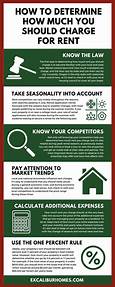How Much Should I Charge for Pet Rent?
Pets are a beloved part of many families, but they can also be a financial burden for landlords. Pet rent is a common way for landlords to recoup some of the costs associated with allowing pets in their properties. But how much should you charge for pet rent?

Factors to Consider
There are a number of factors to consider when setting pet rent. These include:
1. The type of pet. Some pets, such as dogs, are more likely to cause damage to a property than others, such as cats. As a result, you may want to charge a higher pet rent for dogs than for cats.
2. The size of the pet. Larger pets can also cause more damage than smaller pets. As a result, you may want to charge a higher pet rent for larger pets than for smaller pets.
3. The number of pets. The more pets a tenant has, the greater the risk of damage to the property. As a result, you may want to charge a higher pet rent for tenants with multiple pets than for tenants with only one pet.
4. The condition of the property. If the property is in good condition, you may be able to charge a lower pet rent than if the property is in poor condition.
5. The local market. The amount of pet rent that you can charge will also depend on the local market. In areas where there is a high demand for pet-friendly rentals, you may be able to charge a higher pet rent than in areas where there is a low demand for pet-friendly rentals.
How Much to Charge
The amount of pet rent that you charge should be fair and reasonable. It should cover the costs associated with allowing pets in your property, but it should not be so high that it discourages tenants from renting your property.
A good starting point is to charge a pet rent that is equal to 10% of the monthly rent. This is a common amount that is charged by many landlords. However, you may need to adjust the amount of pet rent that you charge based on the factors discussed above.
Other Considerations
In addition to charging pet rent, you may also want to consider requiring tenants to purchase renters insurance. Renters insurance can help to protect tenants from financial liability in the event that their pet causes damage to the property.
You may also want to consider creating a pet policy that outlines the rules and regulations for pets in your property. This policy should include information on the types of pets that are allowed, the number of pets that are allowed, and the responsibilities of tenants with pets.
By following these tips, you can set a fair and reasonable pet rent that will help you to recoup the costs associated with allowing pets in your property.
Declaration: All article resources on this website, unless otherwise specified or labeled, are collected from online resources. If the content on this website infringes on the legitimate rights and interests of the original author, you can contact this website to delete it.





